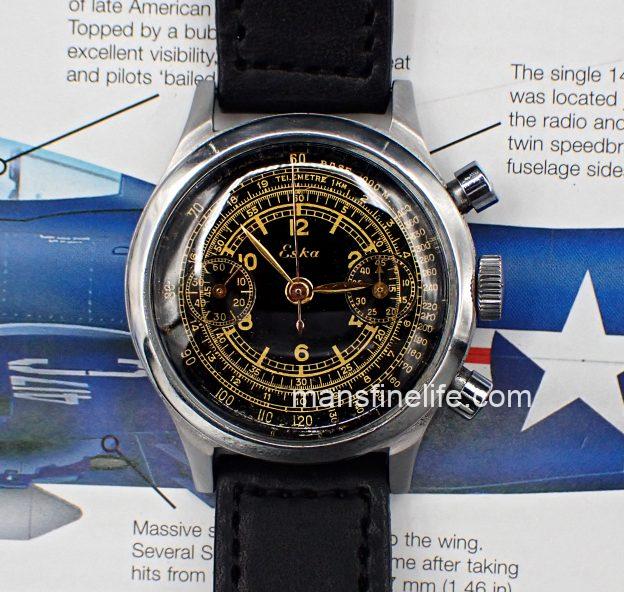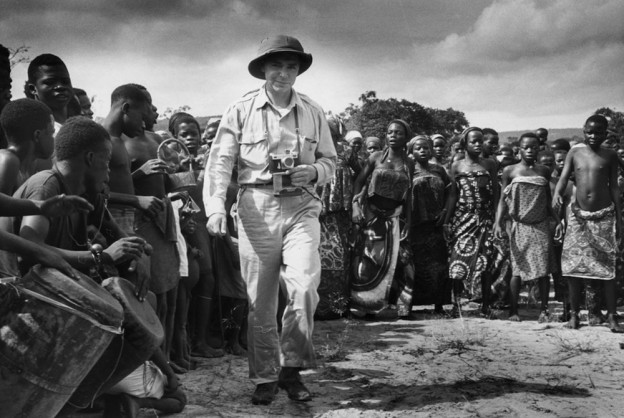CLICK HERE TO CONTACT ME FOR MORE INFO ON THIS KILLER ESKA CHRONO ON HOLD
On offer this month of March is this rare and beautiful circa 1940s-50s Eska chronograph in Spillman case with amazing gilt sector dial, powered by the famed Valjoux 22 movement. A rather unheralded brand, Eska was founded as S. Kocher in 1918 with “Eska” being a simple phonetic version of those initials for the purposes of branding. Like a lot of mid-century manufacturers, Eska made use of the contract oversize Spillman waterproof cases and Valjoux movements to create aviator & military-style chronographs to meet the demand of the WWII and post-War era.

This example is notable not only for the large and sought after 37mm screw back Spillman case and Valjoux 22 caliber with 45-minute counter under the hood but, of course, the obvious superstar is the stunning black gilt dial with super uncommon and beautiful sector dial layout. This is one of the most sought after chronograph layouts in vintage watches, as made famous by Patek Phillipe in several of their most coveted vintage references. While I wouldn’t call this Eska inexpensive, this special piece will certainly set you back a helluva lot less than a period Patek version would.

Overall, this classic Eska chrono is in Very Good vintage condition with a stunning Very Good+ original gilt dial with complex outer chronograph scales, minute track and interior Arabic numeral sector layout for the timekeeping. The case has some wear and the lugs appear to have been given a matte finish rather than the typical polished finish seen on most Spillman cases. The venerable Valjoux 22 movement was serviced recently and is operating well, ready for years’ more faithful service for its lucky new owner.

The all-original and absolutely stunning glossy black gilt dial features complex outer calibrated Tachymeter & Telemeter chronograph scales, followed concentrically by a minute track and Arabic numeral sector dial interior for the standard timekeeping. Engine-turned sub registers for constant seconds at “9” and the 45-minute recorder at “3”, also with gilt numerals. This Eska sector dial represents beautifully on the wrist, often brightly reflecting the light when you move, and the gilt sector dial layout is absolutely stunning aesthetically, not to mention incredibly hard to find in the wild unless on a modern homage.

There are not a lot of Spillman cased, Valjoux 22 chronographs out there and even fewer with nice black gilt dials. But a gilt/gloss sector dial Spillman cased Valjoux 22 chronograph has got to be the rarest iteration around. Make this very special vintage Eska chrono yours today.










